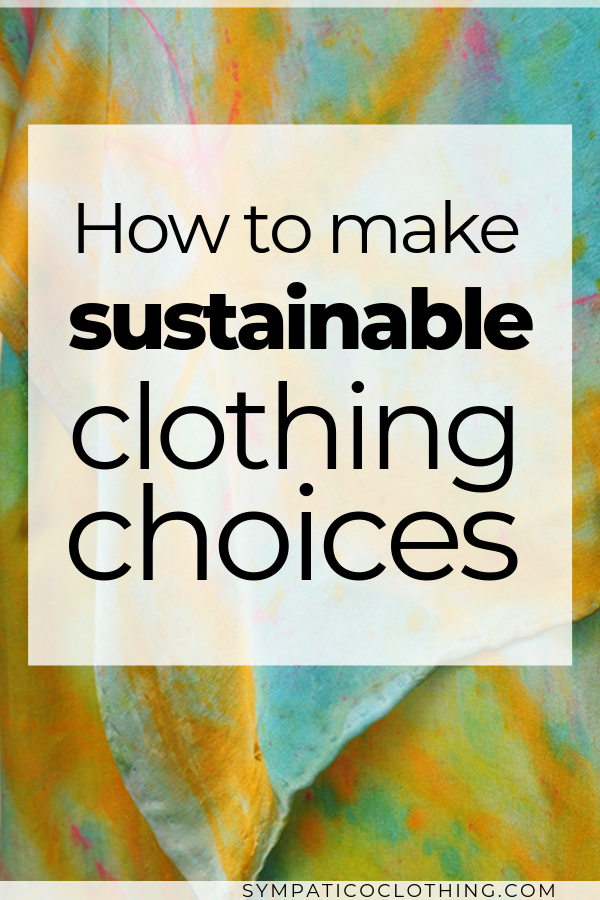Sustainable fashion shopping: Judging quality in women’s wear.
Posted by Rose on 30th Mar 2023
An artisan-made clothing creator weighs in on finding sustainable clothes that will stand the test of time.
In recent years there have been growing signs of discontent among fast fashion’s core audience—young women. Some have grown disenchanted with shoddy merchandise as well as more broadly speaking, fast-fashion’s impact on the world. Their concern is well placed. According to the Earth.org, Americans toss a staggering 85 pound per capita, most of which winds up in your local dump.
Our Graphite Tuxedo Top and Grey Fog Stovepipe Pants are made to last for years of wearing.
Sympatico fans who appreciate the benefits of artisan made clothing are keenly aware of the textile industry’s impact on our earth; it’s second only to petrochemicals in environmental cost. Many women I talk to are committed to the mantra, Reduce, Reuse, Recycle. It’s no accident that reduction in consumption is the first principle of this mantra, and in this it takes direct aim at fast fashion.
In our quest to reduce clothes consumption, what are some concrete things to look for that signal quality and the likelihood a garment will hold up to many seasons of wear? Here are a few things to consider:
Will you still love me tomorrow?
The emotional tug of a prospective new garment is a tricky thing. On one hand, we want to avoid an impulsive purchase we’ll regret, but on the other, the garment needs to call to us right from the hanger or from its photo. The versatility factor is also huge. In how many ways and settings can you imagine wearing it? Look for styles based on classic design elements and lines. Quality fabrics are also essential for durability as are quality sewing. Look for even stitching with no loose threads and neatly finished seams. Reject potential garments that fail a tug test at critical seams. Also look for adequate seam allowances, especially if you think you’ll want to alter the garment later.
Does it feel good?
The first thing most bricks-and-mortar (and craft fair) clothes shoppers do is touch the prospective garment. Consciously or not, we intuitively feel the fabric for its tactile qualities. After all, we’ll be living in the garment and a fiber that itches or doesn’t feel right beneath our fingers is probably destined for a future discard pile. This is where natural fibers tend to have a big advantage for many consumers thanks to their comfortable hand. But when we talk about natural fibers, conventional-versus-organic agricultural processes complicate matters. Conventionally grown cotton garments may feel great to the touch. What’s not so great are the prodigious amounts of pesticides, chemical fertilizers and water used to produce them. Look for sustainable fabrics such as hemp, flax, linen, silk, and wool, as well as environmentally safe textiles such as the Tencel blended with hemp in Sympatico’s fabrics. It’s produced sustainably in a closed-loop system that safely returns processing water to the environment after an algae-based purification.
Fabric physics matter
Although light and delicate fabrics may be appropriate for scarves and lingerie, heavier fabrics last longer in pants, tops, skirts and other outerwear than lightweight counterparts. Flimsy fabrications are likely a cause behind the changing fortunes of fast-fashion producers. The same goes for shoes. While paper-thin soles and skinny heels may be the norm on fashion runways, shopping for thicker components, even in dress shoes, should help ensure better longevity. And by the way, lingerie and delicates last a lot longer if you hand wash them. After a long morning shopping for new bras, I decided to try and prolong my purchases by hand washing them from now on; I’m not eager to go shopping for bras again soon!
It has to fit, period
No matter how much you love a garment, if it's pulling or tugging and restraining your freedom of movement, pass on it. Look critically and objectively in the mirror for signs of a poor fit. Creases, tug lines and a general lack of ease are all signs that you should keep looking. You’ll find more useful tips for getting a great fit here.

Share:






